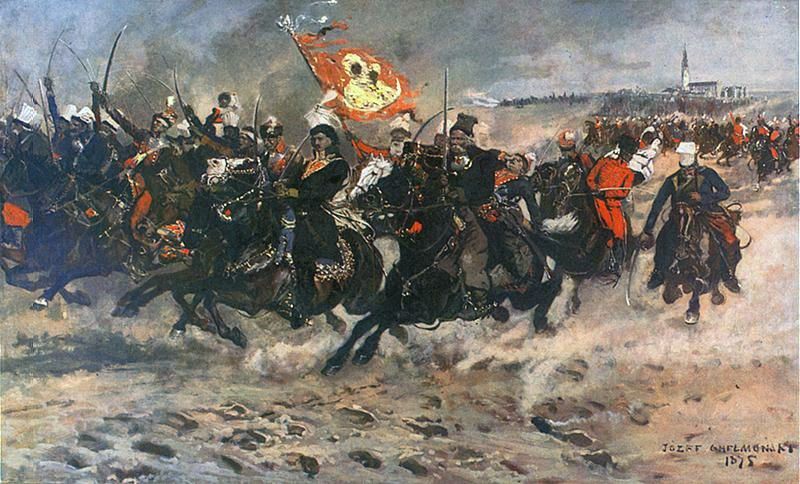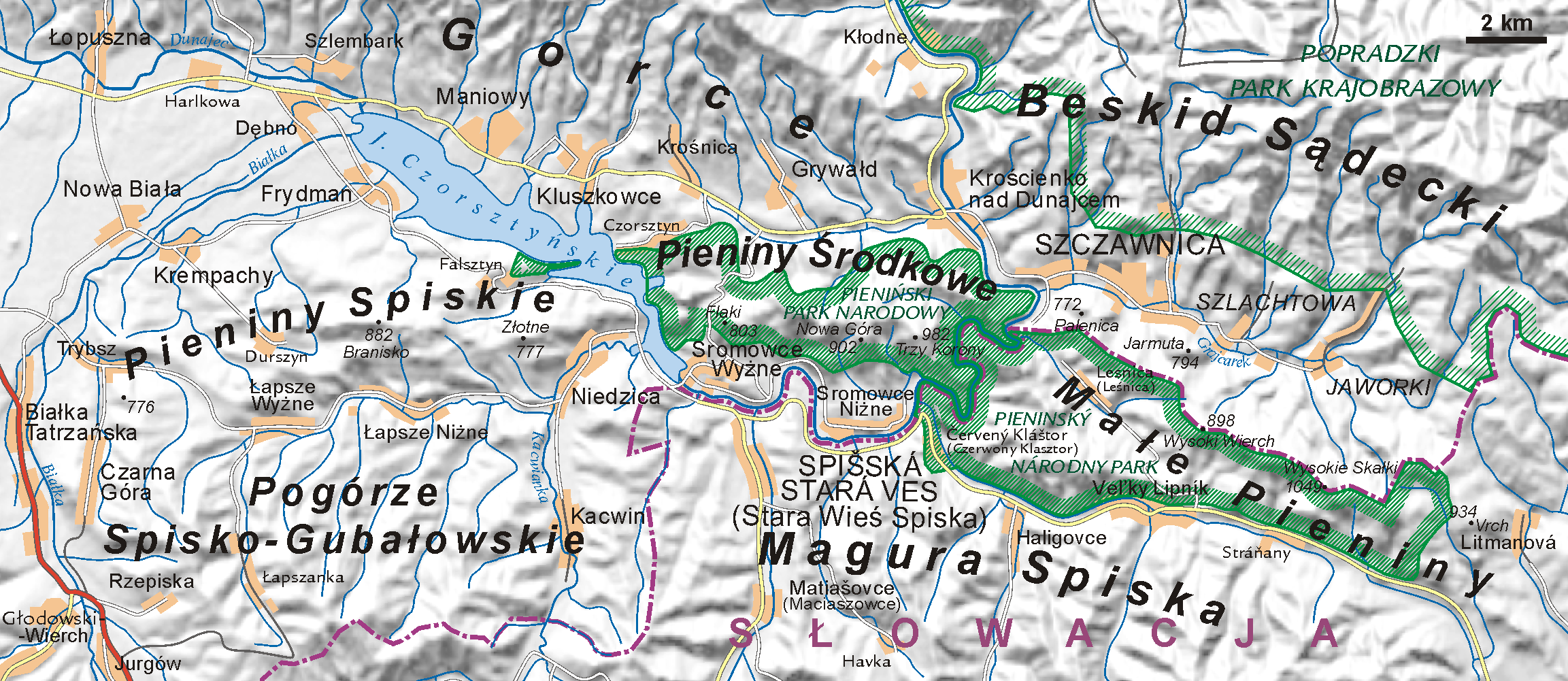|
Melsztyn
Melsztyn is a village on the left bank of the Dunajec river in the Lesser Poland Voivodeship, Poland. It lies approximately north-west of Zakliczyn, south-west of Tarnów, and east of the regional capital Kraków. The village was first mentioned in the year 1347. The name of the village is a Polonized version of a German word ''Mehlstein''. In the Middle Ages, Melsztyn belonged to a famous nobleman Spytek of Melsztyn, who built a castle on a hill. The castle stood for hundreds of years, and was burned in 1771, during the Bar Confederation, as Polish rebels fought the Russians here. Among the owners of Melsztyn were the noble families of Tarnowski, Jordan, Zborowski, Tarło and Lubomirski. The Melsztyn Castle is a ruin now, with an excellent view of the surrounding area. See also * Castles in Poland Below is the list of castles in Poland in alphabetical order, based on similar lists compiled by various sight-seeing societies. [...More Info...] [...Related Items...] OR: [Wikipedia] [Google] [Baidu] |
Spytek Of Melsztyn (died 1399)
Spytek of Melsztyn ( or ) was a Polish nobleman (szlachcic) of the Leliwa coat of arms. Spytek was owner of Melsztyn estates. He served as Court Marshal since 1373, voivode of Kraków Voivodeship since 1381, starosta of Biecz since 1383 and Kraków since 1390. Continuing the idea of Władysław I Łokietek he initiated the marriage of Queen Jadwiga of Poland and Grand Duke of Lithuania – to become king of Poland – Władysław II Jagiełło. In 1391–1396 Spytek reclaimed the Land of Wieluń and Orzeszków from Prince Władysław Opolczyk. On 13 June 1395 the King gave Spytek a part of Podolia as fief, Queen Jadwiga confirmed this on 10 July 1395. During the brief period when he was Duke of Podolia, he succeeded lead to the resignation Fyodor Koriatovych of the rights to Podolia and with Queen and King negotiated with Sigismund of Luxembourg (then King of Hungary) the border issue; and with the Bishop of Vilnius tried to prevent the secession of Lithuania from Polish–Lithu ... [...More Info...] [...Related Items...] OR: [Wikipedia] [Google] [Baidu] |
Zakliczyn
Zakliczyn is a town in Tarnów County, Lesser Poland Voivodeship, Poland, with a population of 1,558 (2006). Zakliczyn lies on the right bank of the Dunajec river, surrounded by wooded hills above sea level. Zakliczyn has a town hall, located in a spacious market square, one of the largest in the province, at . The town was originally called ''Opatkowice''. Its name was changed in 1558, in honour of the village of Zakliczyn, Myślenice County, which was ancient seat of the Jordan family. History The history of Zakliczyn dates back to 1105, when a settlement called ''Dunaiz'' was mentioned in a document by the papal legate Gilles de Paris, according to which, the settlement was said to have belonged to the Benedictine abbey of Tyniec since 1086. In 1215, the village of Opatkowice was mentioned in a document issued by the Bishop of Kraków, Wincenty Kadłubek. At that time, Opatkowice was administratively under the jurisdiction of a starosta in Czchów. By 1326 the village alr ... [...More Info...] [...Related Items...] OR: [Wikipedia] [Google] [Baidu] |
Castles In Poland
Below is the list of castles in Poland in alphabetical order, based on similar lists compiled by various sight-seeing societies. ZAMKI. Spis miejscowości z opisanymi zamkami i fortalicjami. 2014. 
B * Babice ()[...More Info...] [...Related Items...] OR: [Wikipedia] [Google] [Baidu] |
Gmina Zakliczyn
__NOTOC__ Gmina Zakliczyn is an urban-rural gmina (administrative district) in Tarnów County, Lesser Poland Voivodeship, in southern Poland. Its seat is the town of Zakliczyn, which lies approximately south-west of Tarnów and east of the regional capital Kraków. The gmina covers an area of , and as of 2006 its total population is 12,242 (out of which the population of Zakliczyn amounts to 1,556, and the population of the rural part of the gmina is 10,686). The gmina contains part of the protected area called Ciężkowice-Rożnów Landscape Park. Villages Apart from the town of Zakliczyn, Gmina Zakliczyn contains the villages and settlements of Bieśnik, Borowa, Charzewice, Dzierżaniny, Faliszowice, Faściszowa, Filipowice, Gwoździec, Jamna, Kończyska, Lusławice, Melsztyn, Olszowa, Paleśnica, Roztoka, Ruda Kameralna, Słona, Stróże, Wesołów, Wola Stróska, Wróblowice, Zawada Lanckorońska and Zdonia. Neighbouring gminas Gmina Zakliczyn is bord ... [...More Info...] [...Related Items...] OR: [Wikipedia] [Google] [Baidu] |
Bar Confederation
The Bar Confederation ( pl, Konfederacja barska; 1768–1772) was an association of Polish nobles (szlachta) formed at the fortress of Bar in Podolia (now part of Ukraine) in 1768 to defend the internal and external independence of the Polish–Lithuanian Commonwealth against Russian influence and against King Stanislaus II Augustus with Polish reformers, who were attempting to limit the power of the Commonwealth's wealthy magnates. The founders of the Bar Confederation included the magnates Adam Stanisław Krasiński, Bishop of Kamieniec, Karol Stanisław Radziwiłł, Casimir Pulaski, his father and brothers and Michał Krasiński. Its creation led to a civil war and contributed to the First Partition of the Polish–Lithuanian Commonwealth. Maurice Benyovszky was the best known European Bar Confederation volunteer, supported by Roman Catholic France and Austria. Some historians consider the Bar Confederation the first Polish uprising. Background Abroad At the end ... [...More Info...] [...Related Items...] OR: [Wikipedia] [Google] [Baidu] |
Middle Ages
In the history of Europe, the Middle Ages or medieval period lasted approximately from the late 5th to the late 15th centuries, similar to the post-classical period of global history. It began with the fall of the Western Roman Empire and transitioned into the Renaissance and the Age of Discovery. The Middle Ages is the middle period of the three traditional divisions of Western history: classical antiquity, the medieval period, and the modern period. The medieval period is itself subdivided into the Early, High, and Late Middle Ages. Population decline, counterurbanisation, the collapse of centralized authority, invasions, and mass migrations of tribes, which had begun in late antiquity, continued into the Early Middle Ages. The large-scale movements of the Migration Period, including various Germanic peoples, formed new kingdoms in what remained of the Western Roman Empire. In the 7th century, North Africa and the Middle East—most recently part of the Eastern Ro ... [...More Info...] [...Related Items...] OR: [Wikipedia] [Google] [Baidu] |
Kraków
Kraków (), or Cracow, is the second-largest and one of the oldest cities in Poland. Situated on the Vistula River in Lesser Poland Voivodeship, the city dates back to the seventh century. Kraków was the official capital of Poland until 1596 and has traditionally been one of the leading centres of Polish academic, economic, cultural and artistic life. Cited as one of Europe's most beautiful cities, its Old Town with Wawel Royal Castle was declared a UNESCO World Heritage Site in 1978, one of the first 12 sites granted the status. The city has grown from a Stone Age settlement to Poland's second-most-important city. It began as a hamlet on Wawel Hill and was reported by Ibrahim Ibn Yakoub, a merchant from Cordoba, as a busy trading centre of Central Europe in 985. With the establishment of new universities and cultural venues at the emergence of the Second Polish Republic in 1918 and throughout the 20th century, Kraków reaffirmed its role as a major national academic and a ... [...More Info...] [...Related Items...] OR: [Wikipedia] [Google] [Baidu] |
Tarnów
Tarnów () is a city in southeastern Poland with 105,922 inhabitants and a metropolitan area population of 269,000 inhabitants. The city is situated in the Lesser Poland Voivodeship since 1999. From 1975 to 1998, it was the capital of the Tarnów Voivodeship. It is a major rail junction, located on the strategic east–west connection from Lviv to Kraków, and two additional lines, one of which links the city with the Slovak border. Tarnów is known for its traditional Polish architecture, which was influenced by foreign cultures and foreigners that once lived in the area, most notably Jews, Germans and Austrians. The Old Town, featuring 16th century tenements, houses and defensive walls, has been preserved. Tarnów is also the warmest city of Poland, with the highest long-term mean annual temperature in the whole country. Companies headquartered in the city include Poland's largest chemical industry company Grupa Azoty and defence industry company ZMT. The city is currently ... [...More Info...] [...Related Items...] OR: [Wikipedia] [Google] [Baidu] |
Voivodeships Of Poland
A voivodeship (; pl, województwo ; plural: ) is the highest-level administrative division of Poland, corresponding to a province in many other countries. The term has been in use since the 14th century and is commonly translated into English as "province". The Polish local government reforms adopted in 1998, which went into effect on 1 January 1999, created sixteen new voivodeships. These replaced the 49 former voivodeships that had existed from 1 July 1975, and bear a greater resemblance (in territory, but not in name) to the voivodeships that existed between 1950 and 1975. Today's voivodeships are mostly named after historical and geographical regions, while those prior to 1998 generally took their names from the cities on which they were centered. The new units range in area from under (Opole Voivodeship) to over (Masovian Voivodeship), and in population from nearly one million (Opole Voivodeship) to over five million (Masovian Voivodeship). Administrative authority at th ... [...More Info...] [...Related Items...] OR: [Wikipedia] [Google] [Baidu] |
Dunajec
The Dunajec (); Goral dialects: ''Dónajec'') is a river running through northeastern Slovakia and southern Poland. It is also regarded as the main river of the Goral Lands. It is a right tributary of the Vistula River. It begins in Nowy Targ at the junction of two short mountain rivers, Czarny Dunajec and Biały Dunajec (Black and White Dunajec). Dunajec forms the border between Poland and Slovakia for in the Pieniny Środkowe (Slovak: Centrálne Pieniny) range, east of the Czorsztyn reservoir. Geography The Dunajec is long, including its source river Czarny Dunajec,Statistical Yearbook of the Republic of Poland 2017 |
Lesser Poland Voivodeship
Lesser Poland Voivodeship or Lesser Poland Province (in pl, województwo małopolskie ), also known as Małopolska, is a voivodeship (province), in southern Poland. It has an area of , and a population of 3,404,863 (2019). It was created on 1 January 1999 out of the former Kraków, Tarnów, Nowy Sącz and parts of Bielsko-Biała, Katowice, Kielce and Krosno Voivodeships, pursuant to the Polish local government reforms adopted in 1998. The province's name recalls the traditional name of a historic Polish region, Lesser Poland, or in Polish: Małopolska. Current Lesser Poland Voivodeship, however, covers only a small part of the broader ancient Małopolska region which, together with Greater Poland (''Wielkopolska'') and Silesia (''Śląsk''), formed the early medieval Polish state. Historic Lesser Poland is much larger than the current province. It stretches far north, to Radom, and Siedlce, also including such cities, as Stalowa Wola, Lublin, Kielce, Częstochowa, and Sosnowie ... [...More Info...] [...Related Items...] OR: [Wikipedia] [Google] [Baidu] |
Central European Summer Time
Central European Summer Time (CEST), sometimes referred to as Central European Daylight Time (CEDT), is the standard clock time observed during the period of summer daylight-saving in those European countries which observe Central European Time (CET; UTC+01:00) during the other part of the year. It corresponds to UTC+02:00, which makes it the same as Eastern European Time, Central Africa Time, South African Standard Time, Egypt Standard Time and Kaliningrad Time in Russia. Names Other names which have been applied to Central European Summer Time are Middle European Summer Time (MEST), Central European Daylight Saving Time (CEDT), and Bravo Time (after the second letter of the NATO phonetic alphabet). Period of observation Since 1996, European Summer Time has been observed between 01:00 UTC (02:00 CET and 03:00 CEST) on the last Sunday of March, and 01:00 UTC on the last Sunday of October; previously the rules were not uniform across the European Union. There were proposals ... [...More Info...] [...Related Items...] OR: [Wikipedia] [Google] [Baidu] |






